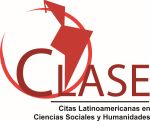Priorización de Intervención de las Subcuencas del río Chone en Ecuador, mediante el uso de Geotecnologías
Palabras clave:
cuenca de drenaje, erosión hídrica, Geotecnologías, morfometría, NDVIResumen
El objetivo es identificar el orden de prioridad de intervención de las subcuencas del río Chone, basado en la interrelación entre la morfometría y la cobertura vegetal. Se emplearon las Geotecnologías para facilitar el análisis espacial. Los parámetros
morfométricos se extrajeron del Modelo Digital de Elevación (DEM) ALOS-PALSAR y para identificar las coberturas vegetales se usó el Índice de Vegetación de Diferencia Normalizada (NDVI) extraído de las imágenes satelitales SENTINEL-2. La comprobación de campo se realizó mediante muestreo no aleatorio en áreas de interés. Los datos se normalizaron y mediante ecuaciones se categorizaron para definir tres niveles de intervención, estos son: alto, medio y bajo grado de prioridad de intervención. Se concluye que 9 subcuencas categorizaron en grado alto (46,80 %; 1230,84 Km2), 10 en grado medio (45,96%; 1208,72 Km2) y 4 en grado bajo (7,24%; 190,41 Km2).
Citas
Asesores y Consultores del Litoral. (2008). Plan de Manejo Ambiental para la construcción del sistema de alcantarillado pluvial de la ciudad de Chone, Consejo Provincial de Manabí, Chone, Ecuador
Andréassian, V. (2004). Waters and Forests: From Historical Controversy to Scientific Debate. Journal of Hydrology [Revista en línea], 291. Disponible: https://elearning.unipd.it/scuolaamv/pluginfile.php/12799/mod_resource/content/1/Reading%20All%20Andreassian%20JoH%202004.pdf [Consulta: 2019, Julio 19]
Biswas, S., Sudhakar, S. y Desai, V. (1999). Prioritisation of Subwatersheds based on Morphometric Analysis of Drainage Basin: A Remote Sensing and GIS Approach [Revista en línea]. Journal of the Indian Society of Remote Sensing. 27, 155. Disponible: https://doi.org/10.1007/BF02991569 [Consulta: 2019, Julio 19]
Carreño, F. (2018). Teledetección: Procesado, Interpretación y Extracción de Variables Asociadas al Medio Litoral. España
Campos, F. (1998). Procesos del ciclo hidrológico. San Luis Potosí, México: Facultad de Ingeniería, Universidad de San Luis Potosí
Di, L., Rundquist, D. C. y Han, L. (1994). Modeling Relationships between NDVI and Precipitation during Vegetative Growth Cycles [Revista en línea]. International Journal of Remote Sensing 15. Disponible: https://doi.org/10.1080/01431169408954231 [Consulta: 2019, Julio 13]
Esquivel-Arriaga, G., Bueno-Hurtado, P., Sánchez-Cohen, I., Velázquez-Valle, M. y Muñoz-Villalobos, J. (2016). Delimitación y análisis morfométrico de tres cuencas del norte-centro de México. México: Centro de investigación disciplinaria
Gaspari, F., Sinisterra, G., Delgado, M. y Besteiro, S. (2013a). Elementos meteorológicos para el manejo de cuencas hidrográficas (2a ed). Argentina: Universidad Nacional de la Plata
Gaspari, F. J., Rodríguez Vagaría, A. M., Senisterra, G. E., Denegri, G. A., Delgado, M. I., y Besteiro, S. I. (2013b). Caracterización morfométrica de la cuenca alta del río Sauce Grande, Buenos Aires, Argentina. AUGMDOMUS, 4, 143-158. Recuperado a partir de https://revistas.unlp.edu.ar/domus/article/view/476
Gutiérrez, C. (2008). Proyecto Sistema de Alerta Temprana de Control de Inundaciones en la Cuenca del Río Chone del Ecuador, Estudios e Investigaciones Hidrológicas Superficiales. Quito, Ecuador: Instituto Nacional de Meteorología e Hidrología
Gravelius, H. (1914). Grundrifi der gesamten Gewcisserkunde. Band I: Flufikunde Compendium of Hydrology, Rivers, in German. Goschen, Berlin.Horton, R. (1945). Erosional development of streams and their drainage basins: hydrophysical approach to quantitative morphology Geological Society of America Bulletin. U.S.A.
Horton, R. (1932). Drainage basin characteristics. Transactions American Geophysical Union. 350-361
Javed, A., Khanday, M. y Ahmed, R. (2009). Prioritization of Sub-watersheds based on Morphometric and Land Use Analisys using Remote Sensing and GIS Techniques. J. Indian Soc. Remote Sens 37(2). 261-274
Kanth, T. y Hassan, Z. (2012). Morphometric Analisys and Prioritization of Watersheds for Soil and Water Resource Management in Wular Catchment Using Geo-Spatial Tools. International Journal of Geology, Earth and Environmental Sciences 2(1) .30-41
Kiran, V. y Srivastasa Y. (2012). Check Dam Construction by Prioritization of Micro Watershed, using Morphometric Analysis as a Perspective of Remote Sensing and GIS for Simlapal Block, Bankura, W. B. Bonfring International Journal of Industrial Engineering and Management Science 2(1) .20-31
Londhe, S., Nathawat, M. y Subudhi. (2010). Erosion Susceptibility Zoning and Prioritization of Mini- Watersheds Using Geomatics Approach. International Journal of Geomatics and Geosciences. 1(3) .511-528
López-Pérez, A., Martínez-Menes, M. y Fernández-Reynoso, D. (2015). Priorización de áreas de intervención mediante análisis morfométrico e índice de vegetación. Tecnología y Ciencias del Agua 6 (1). 121-137. México
Magesh, N., Jitheshlal, K., Chandrasekar, N. y Jini, K. (2013). Geographical Information System-Based Morphometric Analysis of Bharathapuzha River Basin, Kerala, India. Apply Water Sci 3(2).467-477. Disponible: https://doi.org/10.1007/s13201-013-0095-0 [Consulta: 2019, Agosto7]
Manjunath, H. y Suresh, T. (2014). Morphometric and land use/land cover based subwatershed prioritization of Torehalla using remote sensing and GIS. International Academy of Sciense, Engineering and Tecnology.41
Merg, C., Petri, D., Bodoira, F., Nini, M., Fernández, M., Schmidt, F., Montalva, R., Guzmán, L., Rodríguez, K., Blanco, F. y Selzer, F. (2011). Mapas digitales regionales de lluvias, índice estandarizado de precipitación e índice verde. Revista Pilquen, Sección Agronomía 13 (11).1-11
Miller, V. (1953). A Quantitative Geomorphic Study of Drainage Basin Charactetistics in the Clinch Mountain Area. New York: Department of Geology, Columbia University.
Nooka-Ratnam, K., Srivastava, Y., Venkateshwara- Rao, V., Amminedu, E. y Murthy, K. (2005). Check Dam Posiotioning by Prioritization of Micro-Watersheds using SYI Model and Morphometric Analysis – Remote Sensing and GIS Perspective. J. Indian Soc. Remote Sensing, 33 (1). 25-38
Pareta, K. y Pareta, U. (2011). Quantitative Morphometric Analysis of a Watershed of Yamuna Basin, India using ASTER (DEM) Data and GIS. International Journal of Geomatics and Geosciences 2(1). 248-269
Pochat, V. (2008). Principios de la Gestión Integrada de Recursos Hídricos. Bases para el desarrollo de planes nacionales. Global Water Partnership South América
Sangita, M. y Nagarajan, R. (2010). Morphometric Analysis and Prioritization of SubWatersheds Using GIS and Remote Sensing Techniques: A Case Study of Odisha, India. International Journal of Geomatics and Geosciences 1(3). 501-510
Strahler, A. (1957). Quantitative Analysis of Watershed Geomorphology. Transactions, American Geophysical Union 38. 913 – 920
Strahler, A. (1964). Quantitative Geomorphology of Drainage Basin and Channel Networks. In V. T. Handbook of Applied Hydrology. New York: McGraw Hill
Schumm, S. (1956). Evolution of Drainage Systems and Slopes in Badlands at Perth Amboy, New Jersey. Geological Society of America Bulletin 67. 597-646.
Sheng, T. (1992). Manual de campo para la ordenación de cuencas hidrográficas. Estudio y planificación de cuencas hidrográficas. FAO 13(6). Roma
Smith, K. G. (1950). Standards for Grading Texture of Erosional Topography. American Journal Science, 248, 655-668.
Tamang, D., Dhakal, D., Shresta, D. y Sharma, N. (2012). Morphometric Analysis and Prioritization of Miniwatersheds in Rongli Watershed, Sikkim (India) Using Remote Sensing and GIS Techniques. International Journal of Fundamental and Applied Sciences 1(3). 61-66
Tarpley, J., Schneider, S. y Money R. (1984). Global vegetation indices from NOAA-7 meteorological satellite. Journal of Climate and Applied Meteorology, 23:491-494
Tolessa, G. y Rao, P. (2013). Watershed Development Prioritization of Tandava River Basin, Andhra Pradesh, India – GIS Approach. International Journal of Engineering Science Invention 2(2). 12-20
Villón, M. (2002). Hidrología. Serie en Ingeniería Agrícola. Costa Rica: Instituto tecnológico de Costa Rica, Escuela de Ingeniería Agrícola, Comité regional de recursos hidráulico.

Descargas
Publicado
Cómo citar
Número
Sección
Licencia
Derechos de autor 2023 REVISTA DE INVESTIGACIÓN

Esta obra está bajo una licencia internacional Creative Commons Reconocimiento-NoComercial-CompartirIgual 3.0.







 ISSN.
ISSN.